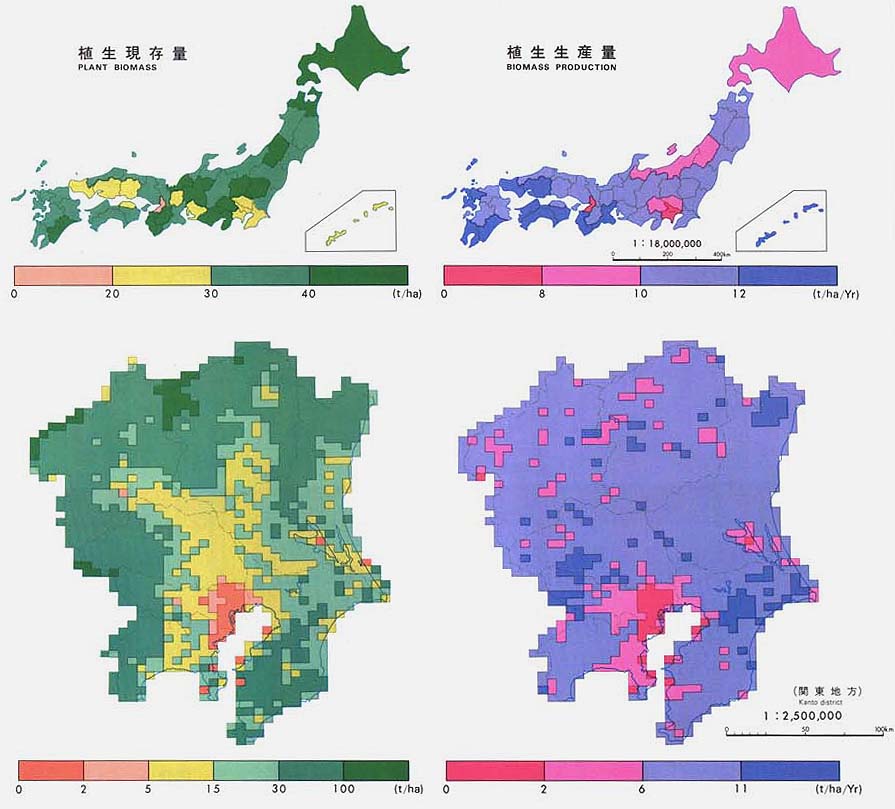17.
植生現存量・生産量
PLANT BIOMASS BIOMASS PRODUCTION
植物は炭酸ガスと水を原料として、光合成によって炭水化物を生産する。光合成によって生産された物質の総量を、総生産量といい、植物自身の呼吸によって消費された分を差引いたものを、純生産量とよんでいる。これらはすべて水をぬいた重量(乾燥重量)で、単位時間あたりの量として示され、また植物は集団として存在することが多いので、単位土地面積あたりで示されるのが普通である。ここでは、トン/ha/年が単位として用いられている。
植生現存量とは、ある場所に存在する植物体の総量である。これは、純生産量から被食量(動物の食物となったもの)と脱落量(植物体の一部が枯死して脱落したもの)を差引いたものが蓄積されたものである。単位には目的に応じてさまざまなものが用いられるが、ここに示すような巨視的な場合には、トン/haが用いられる。
植生現存量・生産量は、植生の種類によってことなる。現存量は長い時間その土地を占有する森林でもっとも大きく、一年生植物の栽培されることの多い農地で小さい。現存量の大きいことは、蒸散による気化潜熱の消費や、多量に含まれる水によって気温の変化の幅をちじめるなど、人間環境にとって重要である。また生産量は空気中の炭酸ガスの固定量と比例し、脱落による土地への有機物供給量をとおして土地の水分貯留能力に関係する。
(佐藤大七郎)
Plants produce organic matter from carbon dioxide and water through a photosynthetic process. Gross production represents the total amount of organic matter produced by photosynthesis, and net production is what is left after the consumption by respiration of the plants themselves. Gross and net production are expressed as dry weight per unit time length, and, as plants grow generally as communities, per unit land area. A variety of units are used according to the purposes, but in a macroscopic description like this metric tons per hectare per year is generally used. The total amount of plant materials present on a given land is called plant biomass or phytomass, which is the accumulation of net production after subtracting the amount grazed by organisms or lost as litter after the death of tissues. Metrictons per hectare is also used here as a unit.
Plant biomass and rate of biomass production differ according to the kind of plant communities and environmental conditions. Plant biomass is largest in forests which occupy the land for a long time and smallest in agricultural lands where mostly annual crops are grown. Plant biomass significantly affects human environment through the consumption of latent heat by transpiration and by buffering the change of air temperature with its great water content, etc. Net production contributes to the large reservoir of carbon dioxide in plant biomass, and is closely related to the water-retaining capacity of soils through the supply of litter to the soil, which helps maintain soil micropores.
(Taishichiro Sato)
